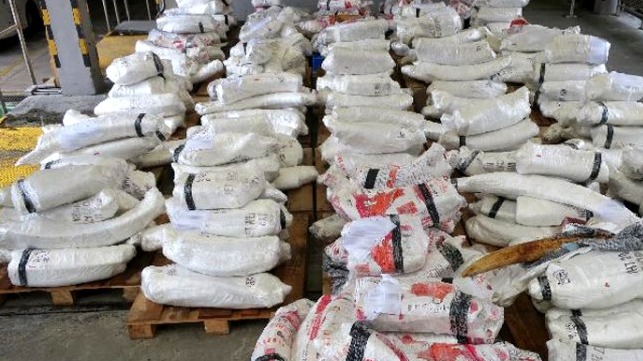Kenya Leading IMO Talks on Clamping Down on Wildlife Trafficking

Kenya is leading high-level international engagements with the international community in a bid to introduce guidelines to suppress the pervasive racket of trafficking wildlife via shipping. In recent years, there has been an increase in the trafficking of illegal wildlife from Africa, leading to a remarkable reduction in biodiversity. The transport industry - especially shipping and aviation - is an important component of this trade, and criminals tend to exploit legislative and enforcement gaps in countries with limited resources.
Despite the misuse of the shipping industry by criminal groups to traffic wildlife, the IMO (International Maritime Organization) lacks an instrument to detect and prevent this crime. This $50-150 billion trade involves a minute fraction of the 800 million TEU in container traffic passing between the world’s ports every year - thus the need to develop guidelines that will act as a tool to distinguish concealed wildlife products in shipment cargo while increasing the role of international shipping lines in control of this illicit trade. This need was recognized by the UNGA (United Nations General Assembly) in its 73rd session: the delegates noted that the shipping industry plays a backbone role in this illicit trade, contributing to the decimation of elephants, rhinos, pangolins and other species.
This reinforces the commitments of the 2015 Buckingham Palace Declaration, spearheaded by Prince William and leading maritime players like DP World and Maersk. The declaration calls on parties to clamp down on wildlife trafficking by sea, and it was signed by 40 organizations on 11 principles geared towards a “zero tolerance” policy for the trade.
Going forward, a set of proposed IMO guidelines could compel most member countries to act against wildlife trafficking within their borders. The proposal to introduce the new guidelines is led by Kenya’s State Department of Shipping and Maritime under Nancy Karigithu, the Permanent Secretary. In her presentation last week to IMO’s Facilitation Committee (FAL), she said the framework of the guidelines will include structured cooperation between ships’ crews, shipping lines and competent authorities so as to detect wildlife trafficking; measures for prevention and detection of wildlife trafficking for cargo port personnel; and procedures for assessment of a ship’s vulnerability to wildlife trafficking, taking into account methods used by traffickers to conceal illegal wildlife in legal cargo on ships.
It makes sense to have a country like Kenya lead this initiative, as it has been both a source and transit country for illegal wildlife products bound for end-user markets in Asia and Europe. Although most African nations have banned game and trophy hunting, illegal trade of wildlife continues uninterrupted, abetted by corrupt government officials and police - especially at ports and borders. The maritime sector plays a critical role in this supply chain, as it is estimated that 72-90 percent of illegal wildlife products are illicitly trafficked by sea as a result of criminal groups abusing international seagoing vessels.
Kenya wants these new guidelines to be considered on the basis of a similar approach taken by IMO through its 2007 Revised Guidelines on drug trafficking on ships engaged in international maritime traffic. Drug and wildlife trafficking are some of the largest transnational organized criminal activities, and the new guidelines propose to enhance the implementation of the IMO code of practice on security in ports.
This is in line with an international commitment to wildlife protection signed by the world’s leaders at the High-Level Summit on Biodiversity Loss last Wednesday, part of the 75th Session of the United Nations General Assembly (UNGA 2020).
The opinions expressed herein are the author's and not necessarily those of The Maritime Executive.
